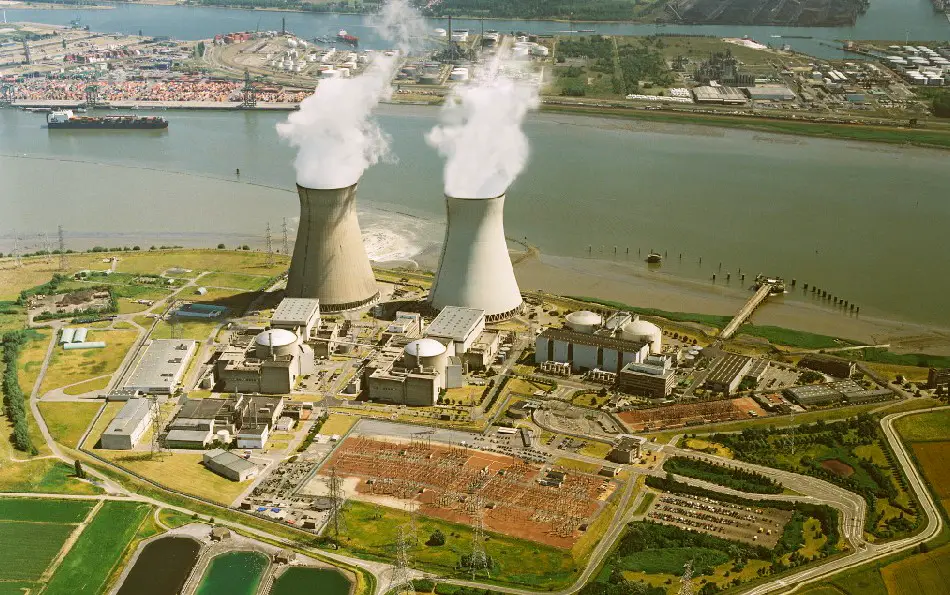
A power plant is a facility that transforms energy into electricity.
Most power plants operate using a heat source, thermal energy. This heat source can come from the combustion of fossil fuels or uranium, in the case of nuclear power plants.
However, there are other types of power plants that operate very differently. This is the case with wind farms, photovoltaic plants, and tidal power plants.
Depending on the energy source, power plants can be classified as:
-
Renewable energy plants. If their source of electricity is inexhaustible. For example, solar energy.
-
Non-renewable energy plants. If the regenerative capacity of the energy source is lower than consumption. For example, fossil fuels.
Definition of power plant
A power plant is an industrial facility designed for the generation of electrical energy on a large scale.
Its main function is to transform different types of energy (thermal, mechanical, chemical, nuclear, or renewable) into electricity, which is then distributed through the electrical grid for consumption in homes, industries, and businesses.
Types of power plants
1. Thermoelectric power plants
 Thermal power plants generate electricity by burning fossil fuels such as coal, natural gas, or oil.
Thermal power plants generate electricity by burning fossil fuels such as coal, natural gas, or oil.
The heat produced heats water into steam, which drives a turbine connected to an electric generator. They are capable of producing large amounts of energy continuously, making them essential in many economies.
However, they have disadvantages such as the emission of polluting gases, high water consumption, and dependence on non-renewable resources.
2. Hydroelectric power plants
These plants harness the energy of moving water to generate electricity.
Dams are typically built to store large volumes of water, which is then released to power hydro turbines. They are a clean, renewable source of energy, with no direct carbon emissions.
However, they can have a significant environmental impact, altering river ecosystems, displacing populations, and affecting local biodiversity.
3. Nuclear power plants
Nuclear power plants generate electricity through the fission of uranium or plutonium.
This process releases large amounts of heat, which is used to produce steam and drive turbines. They are highly efficient and do not emit greenhouse gases during operation.
The main drawback of these plants is that they pose risks such as the possibility of nuclear accidents and the problem of storing radioactive waste, which must be kept isolated for thousands of years.
4. Solar power plants
Solar power plants use the sun's radiation to generate electricity using two main technologies: photovoltaic panels, which directly convert sunlight into electricity, and solar thermal power plants, which concentrate solar heat to generate steam and drive turbines.
They are a clean and inexhaustible source of energy, although their production depends on the amount of solar radiation available and requires large areas for installation.
5. Wind farms
These plants harness wind energy to generate electricity using wind turbines.
They are one of the most widely used renewable sources due to their low environmental impact and large-scale production capacity. However, their efficiency depends on wind speed and consistency. Furthermore, they can cause visual and acoustic impacts, and in some cases, affect local wildlife, especially birds.
6. Geothermal power plants
Geothermal power plants harness the heat from the Earth's interior to generate electricity.
Wells are drilled in areas with geothermal activity to extract steam or hot water, which is used to power turbines. They are a renewable and stable source of energy, as they are independent of climatic factors.
Its installation is limited to regions with geothermal activity, and drilling can release gases from the subsoil or affect ground stability.
7. Biomass power plants
These plants use organic matter, such as agricultural, forestry, and urban waste, to generate electricity through combustion or conversion into biogas.
These types of plants are a renewable alternative and help reduce waste accumulation. Their environmental impact varies depending on the type of biomass used and how their emissions are managed, as their combustion releases carbon dioxide and other polluting compounds.
8. Tidal power plants
These plants harness the kinetic and potential energy of ocean tides.
They are built in coastal areas where sea level fluctuations are significant. They utilize the ebb and flow of the tides to drive turbines and generate electricity. They are a renewable and predictable source, but they require a suitable geographic environment and can have ecological impacts on marine ecosystems.
9. Wave power plants
These plants generate electricity by harnessing the movement of ocean waves.
There are various technologies that capture wave energy, such as floating buoys or submerged structures that move with the swell of the sea. They are a renewable energy source with great potential, but are still in the development stages due to the technical challenges and environmental impact they could generate.
10. Biogas plants
These plants convert organic waste (such as manure, food waste, and agricultural waste) into biogas through anaerobic decomposition processes.
The biogas generated is a mixture of methane and carbon dioxide that can be used to generate electricity. It's a renewable alternative and helps reduce waste, although its efficiency and viability depend on the amount of organic waste available.
11. Hydrogen power plants (hydrogen-based power plants)
Although not a widespread technology, hydrogen power plants use hydrogen as an energy source to generate electricity.
Hydrogen is primarily produced through the electrolysis of water (if the electricity used comes from renewable sources, it can be considered a completely clean option) and then burned or used in fuel cells to generate electricity.
It should be noted that these plants are still under development, but hydrogen has the potential to be a clean and efficient energy source in the future.